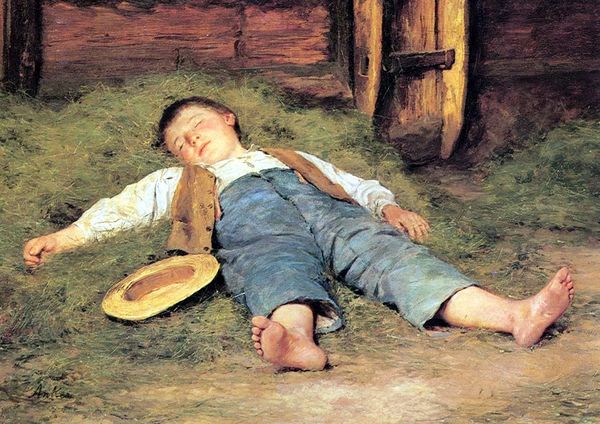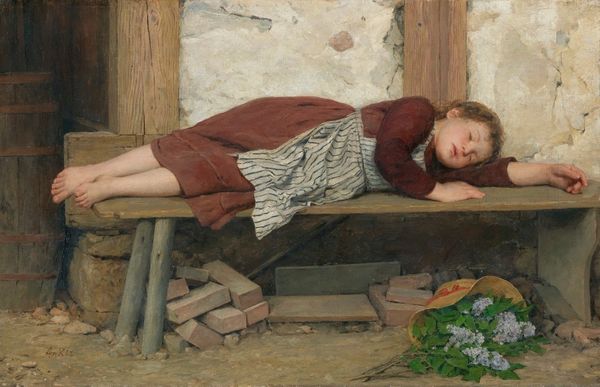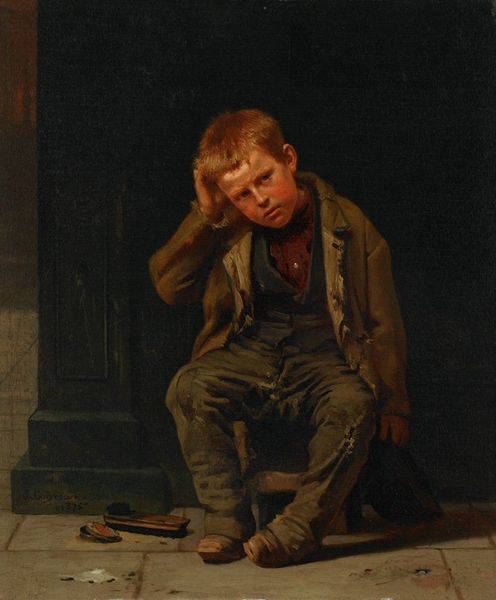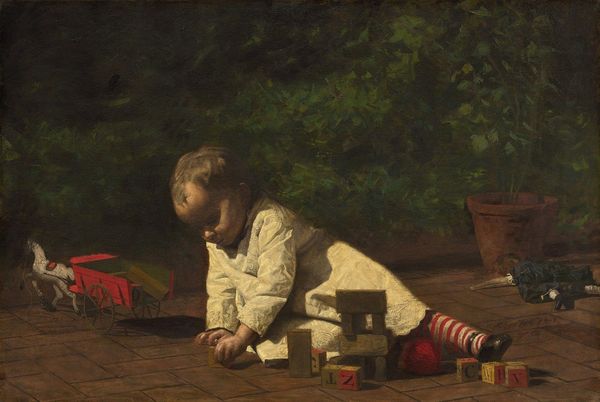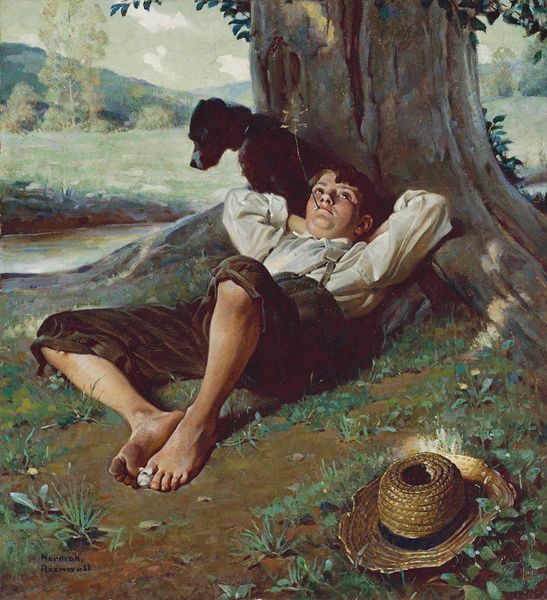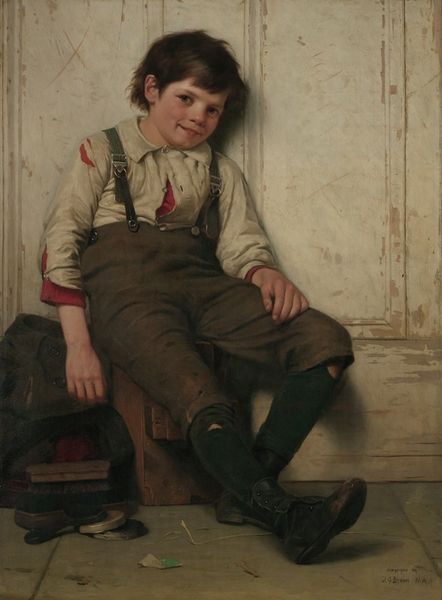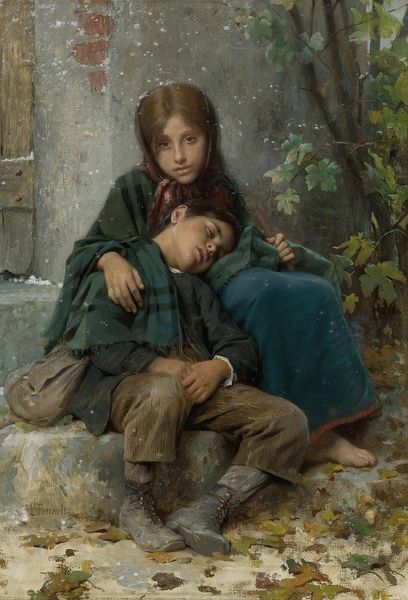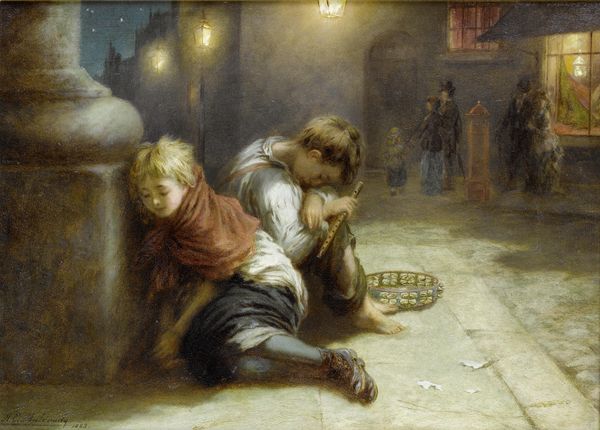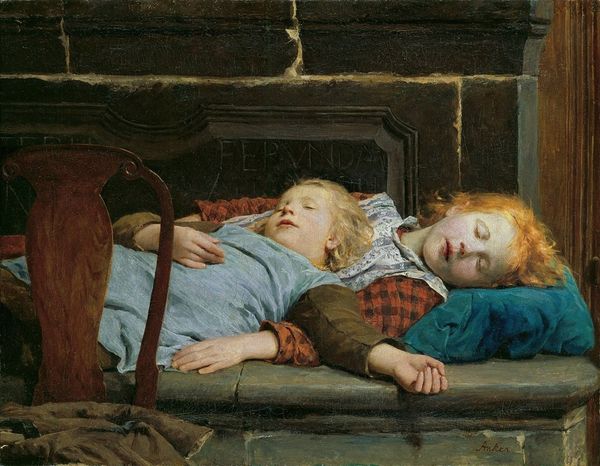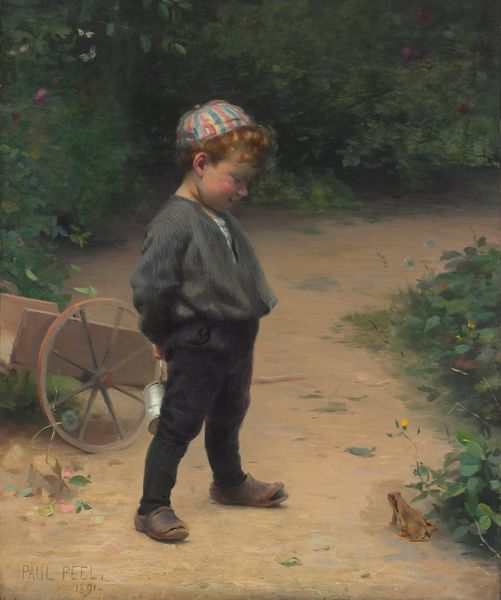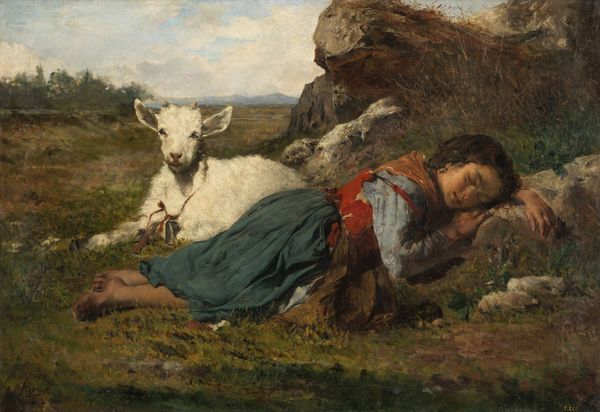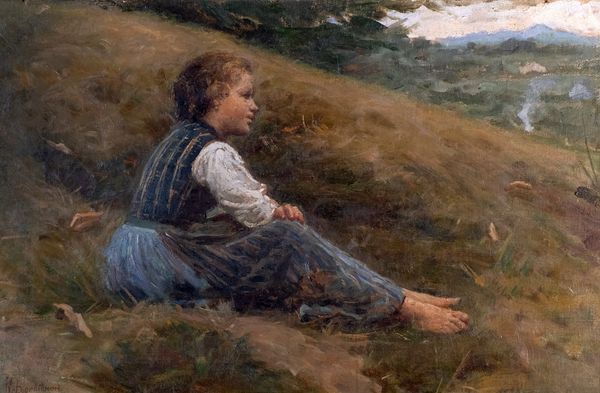
Copyright: Public Domain: Artvee
Curator: Let’s discuss Albrecht Anker's "Boy Asleep in the Hay," an oil on canvas created sometime between 1891 and 1897. My immediate impression is one of peaceful vulnerability, a moment suspended in the amber of time. The composition is cleverly simple. Editor: My attention is grabbed by the tactile nature of it all. The hay itself looks prickly, and one can imagine the roughspun texture of his clothes. It makes me wonder about the actual conditions, the labor, that led to this boy's exhaustion. Curator: Notice the careful interplay of light and shadow. Anker’s mastery lies in the way he models the figure with soft gradations, creating a sense of three-dimensionality. The discarded hat is such a potent visual device. What does it tell us, if anything? Editor: To me, it suggests a specific agricultural process. Harvesting hay was backbreaking work, likely a collective effort involving entire families. The hat lying next to him is both a prop and evidence of physical labour within the rural economy. What seems idyllic actually hints at an immense amount of physical and social construction. Curator: Precisely! The narrative whispers of a genre painting, the visual vocabulary speaks clearly. However, there's also a stillness, an almost classical repose in the figure itself. There is a purity. His smooth, even skin against the prickly hay is a jarring contradiction within an idyllic view. Editor: Absolutely. And look closely at his bare feet! They are not the feet of a bourgeois child. The grime speaks to material conditions; childhood is not abstract but physically felt, materially inscribed on the body through dirt and the elements. The artist’s social critique is everpresent in the texture. Curator: Perhaps that’s what makes this painting so resonant. It's more than a sentimental depiction of rural life; it's a study of form, colour and the very balance between tension and serenity. He’s managed to freeze both labour and reprieve. Editor: Ultimately, Anker presents us with an image not just of sleep but also of the physical realities that produce such moments of rest, offering a compelling glimpse into rural existence, past, present, and still with us today. Curator: It leaves us with a deeper appreciation of art's ability to capture both form and fleeting emotional states in a still, unmoving image.
Comments
No comments
Be the first to comment and join the conversation on the ultimate creative platform.
